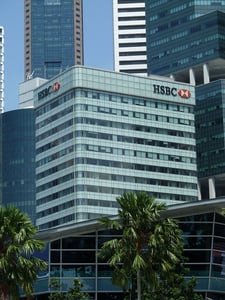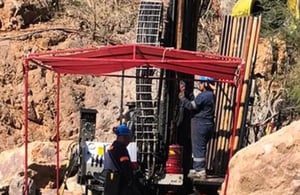Inland Homes PLC (LON:INL) is the topic of conversation when Hardman and Co’s Analyst Tony Williams caught up with DirectorsTalk for an exclusive intervie
Q1: Tony, I want to talk to you today about Inland Homes. Do you think the name is a play on words?
A1: I think it’s a good question and I think it probably is because if you go back in time, 10 years or so, it did start as plain old ‘Inland’ and I think there was a definite play there, as I say, towards ‘in land’ because that’s very much stock and trade.
What it does is it’s a brownfield regeneration specialist, I know I sound like an American politician when I say that but basically, what it does is just take previously used brown land, as opposed to green, takes it through the planning system and then the real alchemy , if you will, comes when it creates a mass plan for these sites and the future of these sites with the local authority and the planning agent. Of course, its free then to foot these sites, sell them on to ever-hungry, land-hungry housebuilders.
Q2: So how much land do Inland Homes have at any one time?
A2: They had their interim figures at the end of March which covered the period through to the end of December last year, so 31st December. At that time, they had 7,372 plots which had a gross development value (GDV) of £2.2 billion and these are mostly in the south and south east.
On the day of the figures, so this is post the balance sheet, so in addition to the 7,000 odd, they signed their biggest deal to date and they applied for outline planning at Cheshunt Lakeside in Broxbourne, Hertfordshire, some of you know that the old Tesco HQ used to be there. This will deliver, over time, another 1.850 homes, probably 18,000 square metres of commercial space and leisure and education. The gross development value of this 30-acre site is estimated to be £650 million.
Q3: How land much did it sell in the latest half of the year?
A3: In the half-year, that the 6 months from July through to December, they sold 336 plots and if you look at the full fiscal year last year, it sold 780 so we’re looking at that sort of number, up around the 1,100/1,200 over the last 18 months.
Q4: Now, you also said that Inland actually builds houses too?
A4: Yes, it does, and I think this is central because when you’re in this market with the housebuilders and you’re selling them land, I think it’s important because all of the housebuilders are really capital-light, they want to take the raw material and flip it.
For Inland to understand how that business model operates, it’s very useful for them to be developing houses in their own right. They do this as it obviously keeps them sharp and connected with their prime clients but it’s also a very useful form of profit because the land profits can be lumpy, these other sites can be quite big, whereas houses are houses. Last year, they sold an average price of £320,000, they sold 96 in the half-year and that’s now starting to contribute very nicely.
What astonished me about the half-year figures is that their order book, these are for houses not for land, was up 22% at £39 million so what became an interesting side-line to keep them sharp in terms of their customers has now become a profit in its own right.
Q5: Finally, I would like to ask you about the Inland Homes share price which I notice is at 64 pence, it’s up 7% in the year to date, do you think this is a fair price?
A5: At 7% in the current market, it’s been up and down, the housebuilders have been up and down, so I think it’s not bad.
I think the key thing with Inland is that it needs an education and a lot of investors are a bit lazy, they don’t want to go into the education. If you take a Barratt or Persimmon, you can value it more money on a PE basis, generates earnings, how much are you prepared to pay its earnings. What Inland is trying to do is to say ‘look, we have these assets under our control, these assets are work x and if we developed them, it’ll be x plus a percentage.
The key metric for Inland is what discount are they trading to their asset value so the real asset value plus the cream on top, where are they in relation to that because that’s where the real profit comes form, that’s where the earnings come from and most importantly, where the cash.
As we sit here today, they’re at about a 38% discount to that net asset value and its nearest peer, if you will, which is Urban&Civic, which is larger company but doing very much the same, they’re at a 5% premium to their adjusted asset value. I just think to myself, there’s something wrong with this picture, if one’s at a near enough 40% discount and one’s at a premium.
I think it’s just a question now of education, getting people on side and the quality of the business will shine through.








































